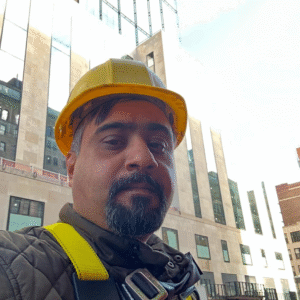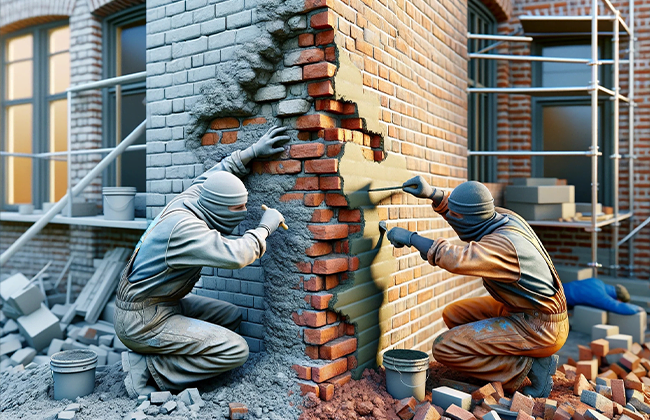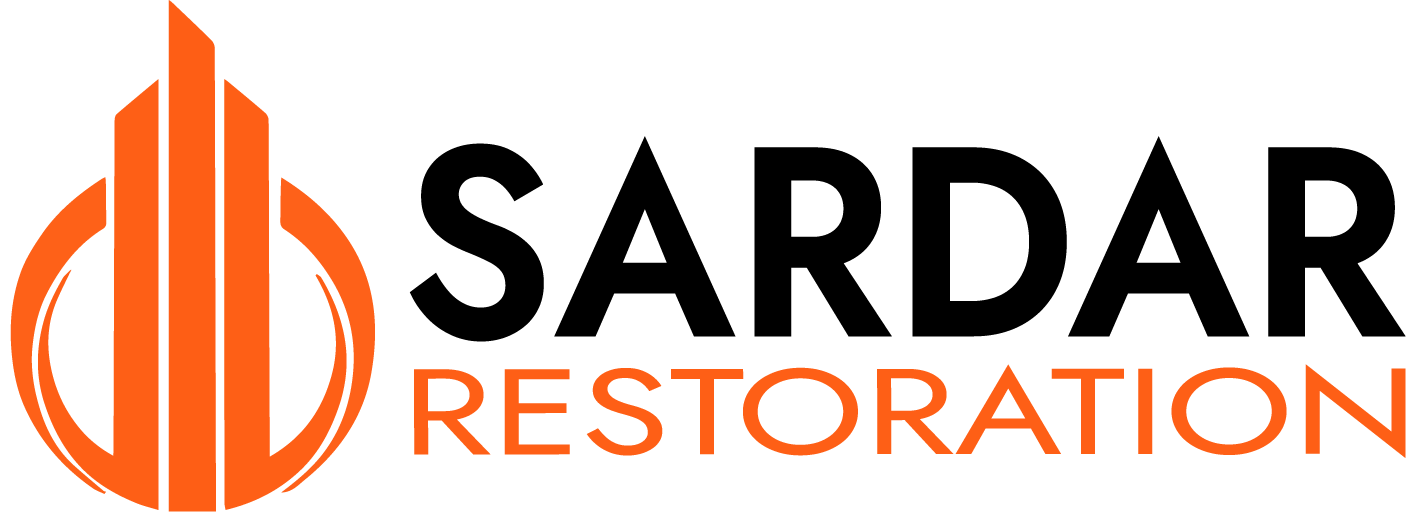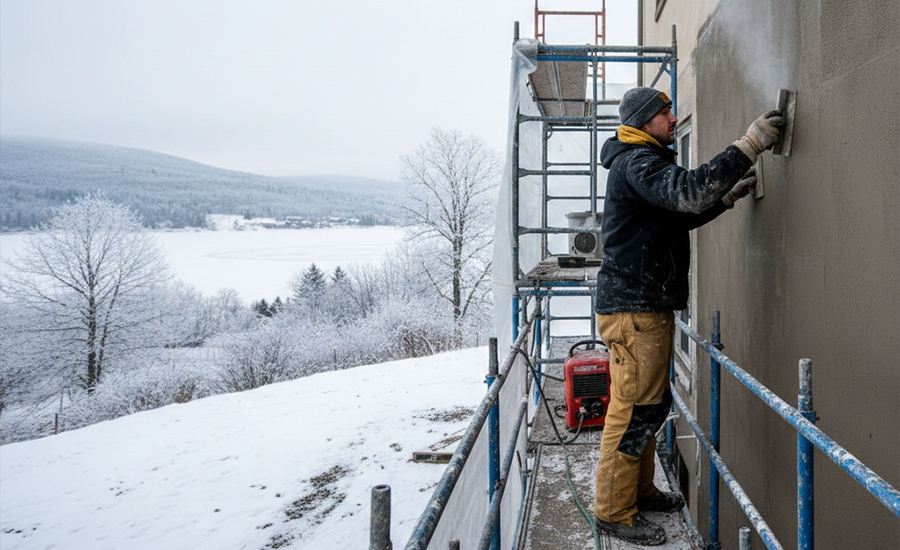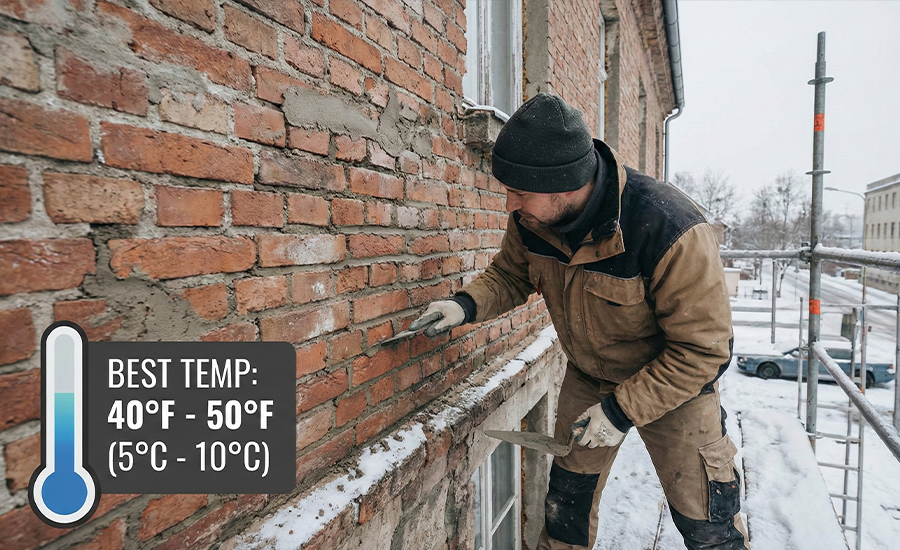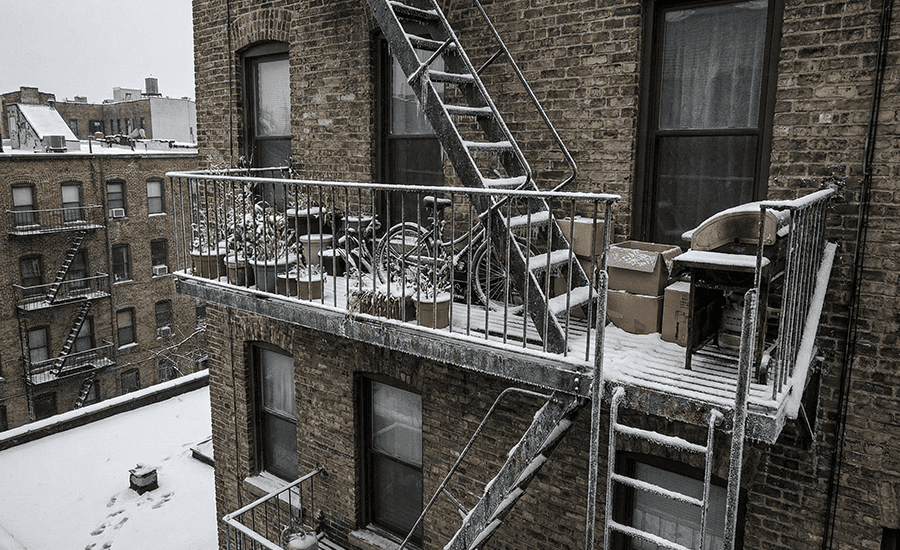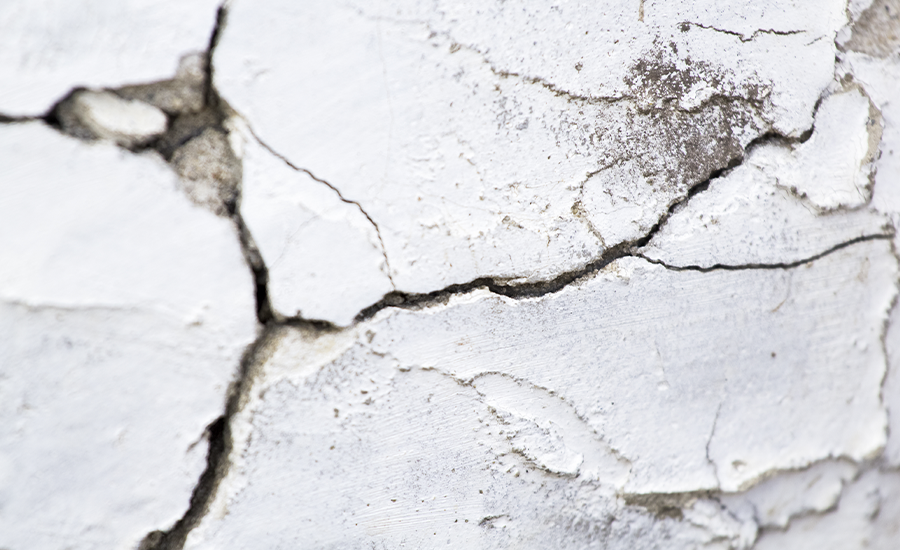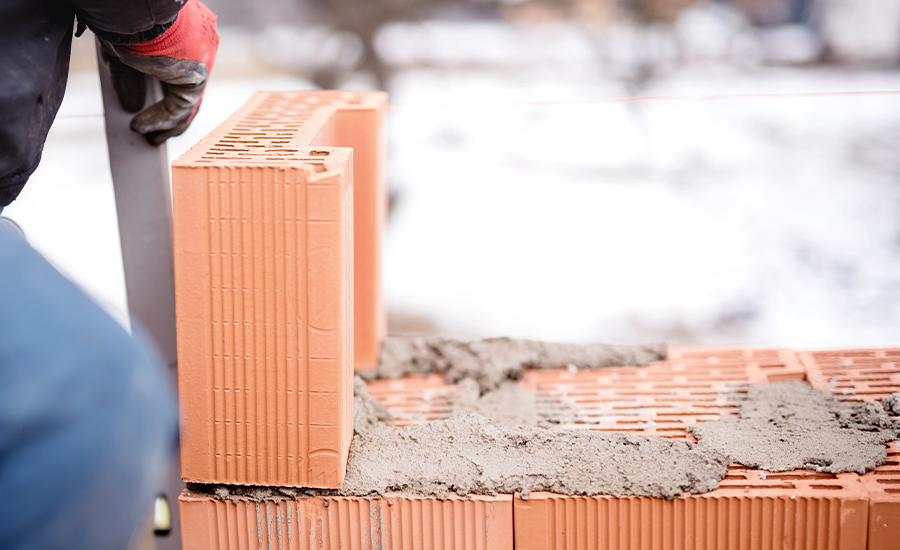Repointing vs tuckpointing are essential masonry restoration techniques that every homeowner should know about. While both processes involve renewing the mortar joints of brick structures, they serve different purposes. Repointing focuses on structural integrity by replacing old mortar, whereas tuckpointing enhances the visual appeal by using two contrasting mortar colors. Understanding the differences between repointing vs tuckpointing can help in making informed decisions for maintaining your property.
What is Repointing?
Repointing, often mistaken with tuckpointing, is the meticulous process of renewing the mortar in the joints of a brick structure. Over time, weather and decay cause voids in the joints between bricks, allowing the undesirable entry of water. This water can freeze and expand, causing further damage through a cycle known as freeze-thaw. Additionally, water entering the voids can lead to structural and water damage within the building itself. Repointing corrects these issues by removing the old, failing mortar and replacing it with new, durable mortar that not only stabilizes the structure but also seals against future water ingress.
Benefits of Repointing
- Enhances Structural Stability: Repointing plays a crucial role in restoring the structural stability of masonry work. This process involves the careful removal of old and deteriorating mortar, followed by the addition of fresh, high-quality mortar. This new mortar fills in gaps effectively, bonding the bricks together more tightly than before. This reinforcement not only supports the structure but also extends its lifespan, ensuring that buildings withstand environmental stresses and loads for years to come.
- Prevents Damage: Another significant advantage of repointing is its ability to prevent damage to brickwork. Over time, gaps in mortar joints can become entry points for water and moisture. If not addressed, this water ingress can cause serious damage, including brick deterioration and the development of damp issues within the building. Repointing seals these gaps, preventing water from penetrating the brickwork and thereby mitigating the risk of such damage. It’s a preventive measure that can save homeowners considerable repair costs down the line.
- Improves Appearance: Repointing also enhances the visual appeal of a building. Aged and weathered mortar can make even the sturdiest buildings look worn and neglected. By replacing old mortar with fresh, new mortar, the aesthetic of the entire structure is improved. This not only makes the building more pleasing to the eye but can also increase its market value. Fresh mortar can revitalize the look of brickwork, making it appear cleaner and more vibrant, which is particularly beneficial for older or historic homes that wish to maintain their charm while ensuring structural integrity.
Through repointing, homeowners can achieve not just practical benefits like enhanced stability and damage prevention, but also aesthetic improvements that make their properties stand out. It’s a wise investment that addresses both the function and form of masonry structures, ensuring they remain safe, solid, and visually appealing.
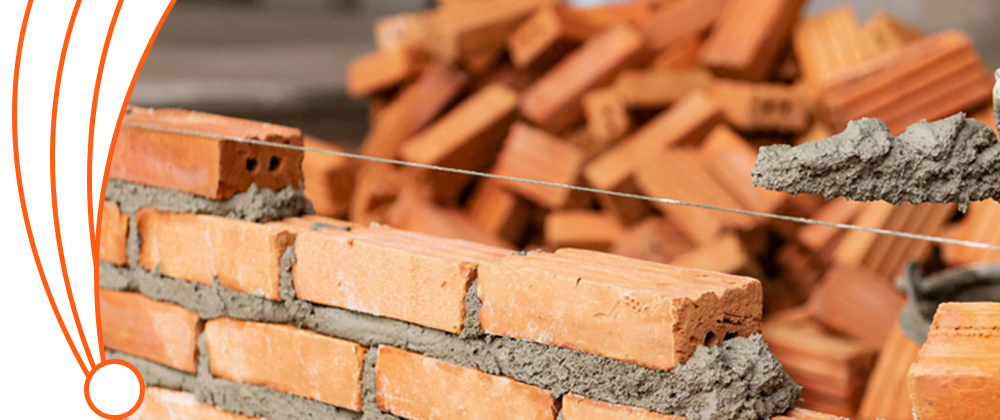
What is Tuckpointing?
Tuckpointing is a specialized technique used to improve the appearance of mortar joints in brick masonry. This method involves applying two different colors of mortar in the joints between the bricks. The primary color matches the bricks, helping to blend the mortar seamlessly with the brickwork. The secondary color, typically a striking white or lighter shade, is then applied in a thin line through the center of the freshly filled joint. This creates a visual illusion of very fine and perfectly aligned joints, enhancing the overall neatness and precision of the brickwork.
Benefits of Tuckpointing
- Aesthetic Enhancement: One of the key benefits of tuckpointing is its ability to significantly enhance the visual appeal of brick structures. The technique highlights the sharp lines between bricks, making the entire facade look more refined and detailed. For homeowners and potential buyers, this aesthetic improvement can make a building much more attractive, reflecting meticulous maintenance and care.
- Adds Value to Property: Tuckpointing can increase the resale value of a property by boosting its curb appeal. The enhanced appearance provided by tuckpointing makes a property stand out in the real estate market, potentially attracting higher offers from buyers. It’s a smart investment, especially for those looking to sell, as it can lead to a quicker sale at a better price.
- Preserves Historical Integrity: For historical buildings, maintaining architectural integrity is crucial. Tuckpointing is particularly valuable in such contexts because it restores the mortar joints without the need for extensive reconstruction. This process allows historical structures to retain their original look and character, which is essential for preservation efforts. It ensures that the aesthetic elements characteristic of their period remain intact, preserving a piece of history while still providing necessary structural maintenance.
Tuckpointing not only serves practical purposes, such as protecting the mortar and extending the life of the masonry, but it also plays a crucial role in enhancing and preserving the aesthetic and historical value of buildings. Whether improving a modern home or maintaining a historic landmark, tuckpointing offers a blend of beauty and functionality that is hard to match with other masonry techniques.
Comparative Analysis: When to Choose Repointing or Tuckpointing?
Deciding whether to opt for repointing or tuckpointing largely depends on the specific needs of your brickwork. Here’s how to make an informed choice based on various factors:
1. Condition of Mortar
If you notice that the mortar in your brickwork is crumbling or retreating, repointing is necessary. This is not just for cosmetic reasons; it’s essential for maintaining the structural stability of the building. Repointing replaces the old, deteriorated mortar with new material, which strengthens the masonry and ensures that the structure remains sound. If the integrity of the mortar is compromised, addressing this issue promptly can prevent more significant and costly damages in the future.
2. Aesthetic Goals
If your primary concern is improving the visual appearance of the brickwork, then tuckpointing might be the right choice. This technique is particularly useful when you want to enhance the aesthetic appeal of your home without extensive structural interventions. Tuckpointing uses two contrasting colors of mortar to create a sharp, attractive contrast that can make even old brickwork look striking and new. It’s ideal for homeowners looking to boost curb appeal and make their home stand out in the neighborhood.
3. Historical Preservation
For historical buildings, maintaining the original aesthetic while ensuring the integrity of the masonry can be a delicate balance. Tuckpointing is often preferred in these cases because it helps preserve the building’s historical appearance. This method allows for the restoration of original mortar joints with visual fidelity, keeping the character and style of the period intact. It’s an excellent option for heritage conservation efforts where authenticity is as crucial as physical maintenance.
Making the Right Choice
When deciding between repointing and tuckpointing, consider both the physical condition of your masonry and your long-term goals for the property. For structural repairs, repointing is the way to go. However, if you’re focused on aesthetics or historical accuracy, tuckpointing offers a solution that both preserves and enhances. Understanding these distinctions can help you make the best choice for your property, ensuring that both its beauty and integrity are maintained.

Step-by-Step Guide to Repointing
Repointing is a meticulous process that involves several key steps to ensure the longevity and stability of masonry work. Here’s how it’s done:
1. Assessment
First, a thorough inspection of the existing mortar is necessary. This step involves checking for any signs of damage such as cracking, crumbling, or receding. It’s crucial to determine the extent of deterioration to plan the scope of repointing work needed.
2. Removal
The next step is the careful removal of the old mortar. This must be done with precision to avoid damaging the bricks. Typically, masons use tools like chisels and hammers, and for deeper joints, power tools may be used. The goal is to remove the mortar to a depth that allows the new mortar to bond properly.
3. Preparation
Preparing the new mortar mix is critical. The mix should match the original mortar in terms of color, consistency, and water permeability to ensure compatibility with the existing masonry. This often requires a custom mix, which can include varying proportions of sand, cement, and sometimes lime, depending on the original mortar’s composition.
4. Application
The application involves filling the cleaned-out joints with the new mortar. Carefully complete this step by pressing the mortar into the joints to ensure a solid bond and full coverage without air pockets. Then, tool the mortar to match the original joint finish, ensuring a seamless repair that blends with the existing masonry.
Step-by-Step Guide to Tuckpointing
Tuckpointing, while similar in some respects to repointing, includes unique steps tailored to enhancing the aesthetic appeal of the brickwork:
1. Color Matching
The first step in tuckpointing is to create a mortar mix that closely matches the color of the existing bricks. This ensures that the base color of the mortar is not conspicuous and blends in well with the brickwork.
2. Mortar Application
Apply the base color mortar into the cleaned and prepared joints. Apply this mortar smoothly and uniformly to form the bulk of the filling, ensuring it fully supports the bricks and provides a flat surface for the next step.
3. Line Creation
Finally, a contrasting mortar line is applied. This line, typically in white or a lighter shade, is carefully applied along the center of the freshly filled joints. The line is narrow and precise, creating the distinctive look of tuckpointing, which highlights the neat, fine lines between the bricks, giving the entire wall a more refined appearance.
Both repointing and tuckpointing require skilled craftsmanship to ensure the work not only restores the structural integrity of the masonry but also enhances its appearance. Whether you choose repointing to repair and stabilize your brickwork, or tuckpointing to add a decorative touch, following these steps can significantly prolong the life and beauty of your masonry structures.
Conclusion
Understanding the differences between repointing vs tuckpointing is crucial for maintaining the aesthetic and structural integrity of your home. If you are looking for a professional contractor to handle your repointing needs, don’t hesitate to contact us at (+1) 917-355-8556 for expert services tailored to your requirements. Ensure your home’s longevity and beauty with the right masonry care.
FAQs
Q: What is the main difference between repointing vs tuckpointing?
A: Repointing vs tuckpointing differ primarily in purpose and technique. Repointing is aimed at restoring the structural stability of masonry by replacing old, deteriorated mortar. Tuckpointing, meanwhile, focuses on aesthetic improvements by using two contrasting colors of mortar to create a visually pleasing effect.
Q: When should I choose repointing vs tuckpointing for my home?
A: Choose repointing if the mortar in your brickwork is deteriorating and compromising the structure’s stability. Opt for tuckpointing if your goal is to enhance the visual appearance of your home’s brickwork with fine, contrasting mortar lines.
Q: How often should I perform repointing vs tuckpointing?
A: The frequency of repointing vs tuckpointing depends on the condition and exposure of your brickwork. Consider repointing when you notice visible signs of mortar deterioration. Perform tuckpointing as needed to enhance aesthetic appeal.
Q: Can repointing vs tuckpointing increase home value?
A: Yes, both repointing and tuckpointing can increase your home’s value. Repointing by ensuring the structural integrity and tuckpointing by enhancing the external aesthetics, both contribute to raising property appeal and marketability.
Q: What are the cost implications of repointing vs tuckpointing?
A: Generally, repointing may be less expensive than tuckpointing because it involves simpler materials and techniques. Tuckpointing, which requires precise color matching and application, might be costlier due to the detailed craftsmanship required.


